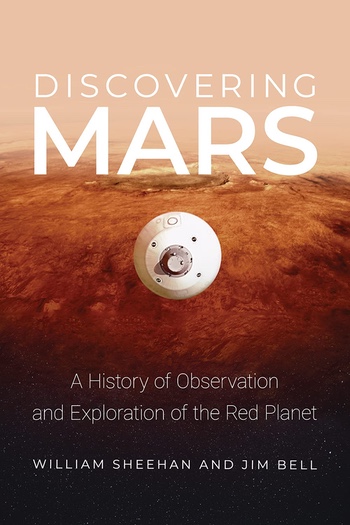Review: Discovering Marsby Jeff Foust
|
| “You see with your brain, not with your eyes,” they write about how some astronomers saw Martian canals and others did not. |
William Sheehan, a history of astronomy, and planetary scientist Jim Bell start at the beginning: “Perhaps the earliest reference to Mars in human culture is as part of the Aboriginal Australians’ Dreamtime, a vision from time beyond memory” but which dates back perhaps more than 40,000 years, they write. From that prehistory they work through early observations of Mars to track its orbit, which over time provided the evidence to support a Sun-centered, rather than Earth-centered, model of the solar system.
The invention of the telescope in the early 1600s turned Mars from a wandering red star to a world of its own. Astronomers struggled to interpret those blurry images, but often defaulted to imprinting our knowledge of Earth onto Mars, be it interpretating areas as seas or regions of vegetation—not to mention the now-infamous “canals” seen by some in the late 19th and early 20th centuries.
Similarly, the era of spaceflight revolutionized our understand of Mars, killing off once and for all any thought of the planet being Earthlike. Instead, they have provided a far richer and more complex view of the planet, one that is inhospitable to life on its surface but may have supported it in a warmer, wetter past (and might still support primitive life underground.) Missions like Perseverance will try to provide the evidence that Mars once hosted life.
That a lot of fit into 550 pages (excluding appendices) of text, but the authors manage to provide many details about studies of Mars and do so in an engaging way. They offer a lot of biographical information about many of the key astronomers involved in Mars studies as well as their work. One particularly interesting chapter examines why some astronomers, but not all, claimed to see canals on Mars. “You see with your brain, not with your eyes,” they write, with observers more likely to interpret what they saw in brief “flashes” of ideal atmospheric conditions as artificial structures than “meaningless noise.”
There is a noteworthy change in tone in the book about halfway through, as it shifts into the spaceflight era. In this second half of the book there are far fewer of the biographical sketches of astronomers and other scientists than in the first part of the book, with more discussion about the technical details of missions. It’s not clear if that was intentional, an artifact of differing writing styles of the authors, or a reflection of a much bigger change in the study of Mars. Up until the Space Age, astronomy relied extensively on royal benefactors or private funding to support individuals’ work. Spacecraft missions require government resources and big teams, part of a broader shift of “Big Science” in the second half of the 20th century.
The book briefly touches on the future of Mars studies, from Mars Sample Return to potential human missions by NASA or other agencies or even SpaceX. “It’s not impossible that the first people on Mars could be SpaceX employees (or customers), rather than NASA astronauts,” they write. Those plans, and their schedules, remain uncertain (as this essay we begin prepared for publication, the European Space Agency said its ExoMars mission is now “very unlikely” to launch this September because of sanctions linked to Russia’s invasion of Ukraine.) What is certain, though, is that those missions will once again reshape our understanding and appreciation of Mars, just like earlier spacecraft missions, telescopes, and visions from times beyond memory.
Note: we are using a new commenting system, which may require you to create a new account.
